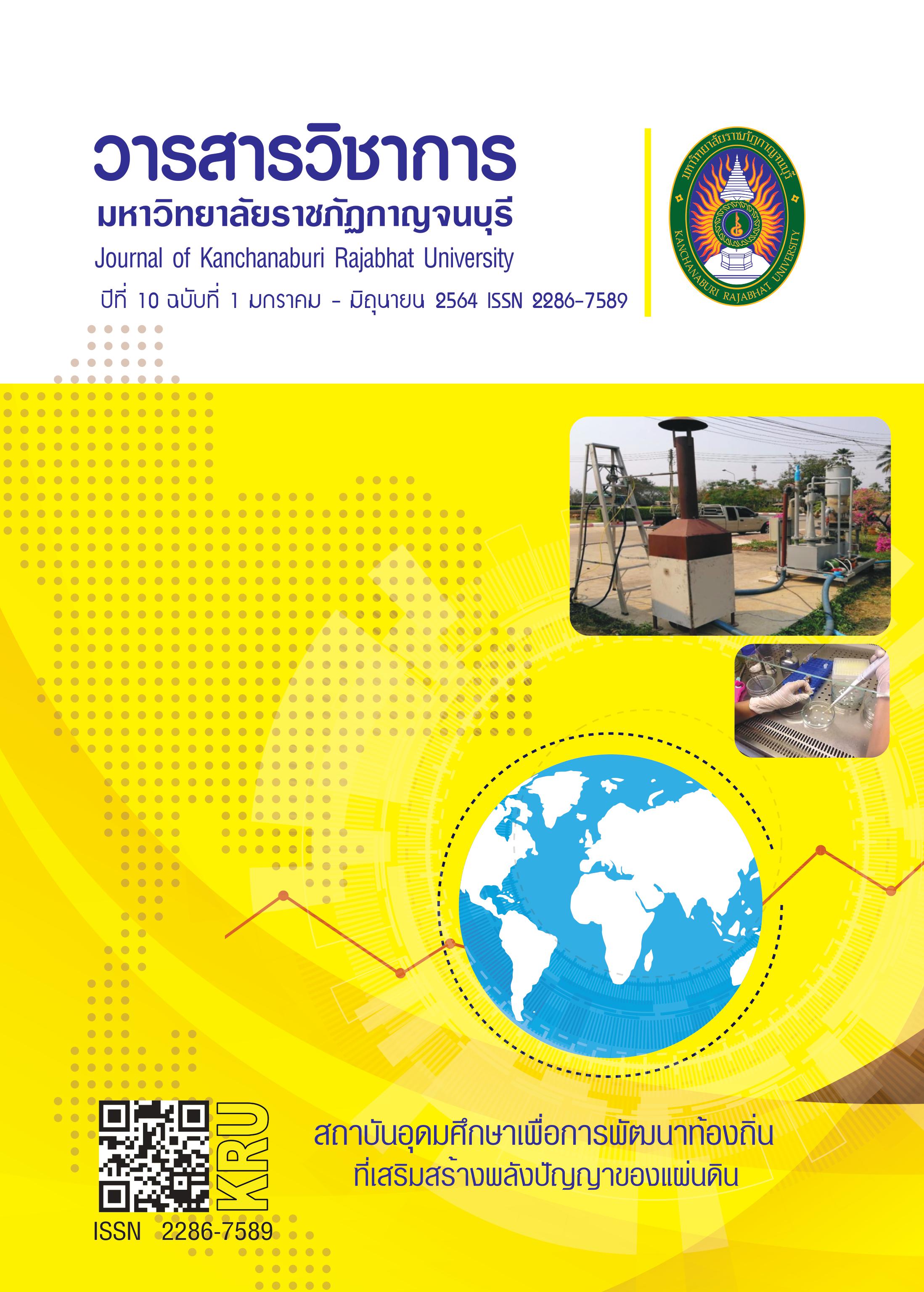THE ANXIETY OF ONLINE LEARNING DURING THE COVID 19 PANDEMIC OF PHYSICAL EDUCATION STUDENTS
Main Article Content
Abstract
The purpose of this research was to study the anxiety of online learning during the COVID 19pandemic of Physical Education students in Srinakharinwirot University.The sample group, determined based on Krejcie and Morgan’s Table and simple random sampling proportional to the number of students in each year class, comprised 181 Physical Education students in years 1-4. The research instrument was an anxiety questionnaire (CVI and Objective = 1.00 and Cronbach reliability = 0.97) whose validity was approved by three experts. The data were analyzed by means of percentage, mean and standard deviation.
The research found that 59.70% of the students were male and 40.30% were female. In addition, 25.20% of the students were first-year students, 35.20% were second-year students, 17.60% were third-year students, and 22% were fourth - year students. For the course characteristics, 10.7% were theory courses, 1.20% were practice courses, and 88.10% were courses that combined both theory and practice. The most frequently used channel for online lessons was Google Classroom, followed by Zoom Meeting, Line, Meet, Hangout, Facebook, YouTube and others, respectively. The mean of the overall anxiety of the Physical Education students was at a high level of 4.03 (S.D. = 1.07). The top three areas of anxiety of Physical Education students featured the course contents at the highest level of 4.40 (S.D. = 0.89), assignments/homework at 4.12 (1.05), and the ability of learning at a high level of 4.10 (S.D. = 1.05), respectively. The second-year students had the highest level of anxiety at 4.35 (S.D. = 0.73).
Article Details
References
กรมสุขภาพจิต. (2541). คู่มือคลายเครียด (พิมพ์ครั้งที่ 6). กรุงเทพฯ : ดีไซน์คอนดักชั่น.
ข่าวเชียงใหม่. (2562). โรควิตกกังวลกับโรคซึมเศร้า. ค้นเมื่อ เมษายน 20, 2563,
จาก https://www.chiangmainews.co.th/page/archives/893934
ตฏิลา จำปาวัลย์. (2561). ความวิตกกังวลตามสถานการณ์. วารสารพุทธจิตวิทยา, 3(1), 13 - 20.
มีนนภา รักษ์หิรัญ. (2558). ความวิตกกังวลของนักศึกษากัมพูชาการเรียนรู้ภาษาไทยเพื่อศึกษาต่อในมหาวิทยาลัย
เทคโนโลยีราชมงคลตะวันออก วิทยาเขตจันทบุรี. SDU Res. J, 11(3), 163-176.
กัลยา วานิชย์บัญชา. (2550). การวิเคราะห์สถิติ : สถิติสำหรับการบริหารและวิจัย (พิมพ์ครั้งที่ 10). กรุงเทพฯ :
จุฬาลงกรณ์มหาวิทยาลัย.
ศิรินันท์ นุยภูเขียว. (2561). ปัจจัยที่ส่งผลกระทบต่อความวิตกกังวลในการเรียนภาษาอังกฤษของนักศึกษา
ชั้นปีที่ 1 : กรณีศึกษา มหาวิทยาลัยราชภัฏพระนครศรีอยุธยา. วารสารวิชาการมหาวิทยาลัยธนบุรี,
(28), 231-243.
ศิริพร จีรวัฒน์กุล. (2530). ครูกับการช่วยเหลือนักเรียนที่ตกอยู่ในภาวะฉุกเฉินทางจิตเวช. วารสารแนะแนว,
(64), 21-29.
สิรินธร วัชรพืชผล และจงกล จันทร์เรือง. (2558). การพัฒนาบทเรียนออนไลน์ เรื่อง การใช้งานอินเทอร์เน็ต
โดยเทคนิคการเรียนรู้แบบปรับเหมาะกับความสามารถของนักเรียน. การประชุมเกี่ยวกับคอมพิวเตอร์
และเทคโนโลยีสารสนเทศแห่งชาติ ครั้งที่ 11.
สำนักข่าวอินโฟเควสท์. (2563). ถอดบทเรียนทั่วโลกรับมือ ‘โควิด 19’.ค้นเมื่อ เมษายน 20, 2563,
จาก https://www.infoquest.co.th/2020/11052.
อิศรัฏฐ์ รินไธสง. (2557). การหาค่าความเที่ยงตรงเชิงเนื้อหาโดยดัชนีความเที่ยงตรงเชิงเนื้อหา. ค้นเมื่อ
เมษายน 20, 2563, จาก https://sites.google.com/site/stats2researchs/student-of-the-month/johndoe
Krejcie, R. V., and D. W. Morgan. (1970). “Determining Sample Size for Research Activities.”
Educational and Psychological Measurement, 30 (3), 607-610.


